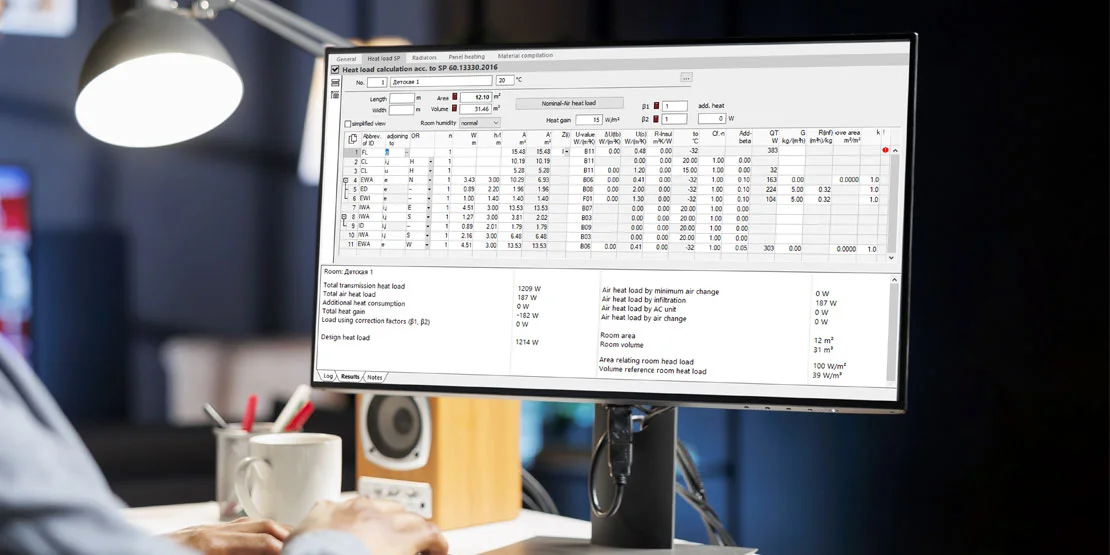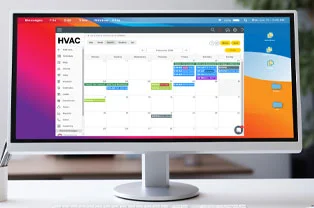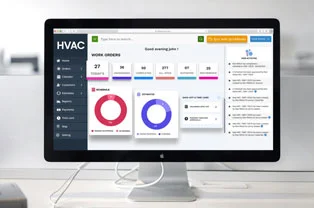HVAC Load Calculation/Calc Software
The calculation process is designed for an effective and efficient heating and cooling systems specially in the residential and commercial buildings. The HVAC calculation or calc software helps the users in determining the appropriate size of HVAC equipment and also maintaining the indoor conditions with an equal optimization on the energy usage. In this particular blog we will read about the importance of HVAC load calculations, what are the methodologies which it involves, and an overview of various HVAC software tools available for the accurate calculations.

Importance of HVAC Load Calculations
Energy Efficiency
The HVAC sector need to have a Proper load calculations which will also work well for the energy efficiency. Whereas on the other hand the oversized HVAC systems can lead to increased energy consumption, with a risk of higher operational cost. It can also decrease the level of comfort also an undersized system also struggles as it cannot maintain the comfortable temperatures within the area which further leads to overworking of the equipment and premature failure.
Comfort
Who doesn’t love the well-calculated load, everyone right, the HVAC load calculation/calc software ensures the user to gets a that indoor environments that remain comfortable all year-round. The user also can by accurately predict the heat and cooling as per their needs or the occupancy patterns, the HVAC professionals can work with effectively managed temperature and the humidity levels.
Regulatory Compliance
There are many jurisdictions that requires a compliance with standard settings as per the organizations these can vary from Air Conditioning Contractors of America popularly known as the ACCA. On the other hand the Manual J load calculation method is the most recognized form with works perfectly as per the industry standard for any residential load calculations.

Methodologies for Load Calculation
The user can choose from several methodologies in the HVAC load calculations:
Manual J Calculation
The Manual J method comes as a detailed analysis method of load calculation as it deeply understand the building's characteristics and works accordingly, it involves:
Square Footage: It signifies the total area that need to be prepared.
Insulation Levels: It involves the R-values of walls, roofs, and floors within a single unit.
Window Specifications: The window specifications includes the Type, size, orientation, and the shading areas of the total windows.
Occupancy: It targets the number of people that regularly use the space and their choices.
Appliances and Equipment: It forms a systemic calculation of the heat generated by the appliances and the lighting.
The Manual J method together provides the complete assessment to the accounts for both the heat gain (cooling) and the heat loss (heating) under different business conditions.


Block Load vs. Room-by-Room Load Calculations
Block Load Calculation:
The block load calculation, works well on the calculation of the total heating or cooling load of the entire organization under a single unit. This approach not only gives quicker solution but also comes as an affordable when calculated on the basis of room.
Room-by-Room Calculation:
The Room-by-Room Calculation method assesses each room individually, and also allows the user to get a more tailored system that is designed based on the unique factors affecting each space. It is also useful for buildings with complex requirement and uses across different areas of service.

Software Tools for HVAC Load Calculations
There are various option available that facilitate the HVAC load calculations. These tools also streamline the process of the user by automating their data entry and providing them with instant results based on their previously established algorithms.
EMS HVAC Load Calculator
The tool can cater for both the residential and commercial applications. The Key features it includes are:
Provides calculations that can assist the user in whole house heat loss and gain.
Works with Room-by-room load assessments.
EMS load calculator provides the duct sizing capabilities.
Manual S guidelines as the Equipment selection.
Cost analysis tools that works on the evaluation of energy expenses over time.

Some Tools Options
Odoo
It is a software that can be used for all business sizes and also allows the user with calculations quickly without those extensive training. The software is an affordable option that incorporates a wide variety of features and modules.
EDS Tech Software
It offers a range of HVAC software solutions that helps the user with speed and accuracy especially in the heat loss/gain calculations. The tools it provides are made with a motive of easing out the usage and make it suits for every individual.
BTU Calculator
It comes under the Calculator.net and claims to only be for the simpler needs, Calculator provides simply calculates the estimated heating or cooling requirements based on the specific room size and the insulation levels.
AC Direct Sizing Calculator
The AC direct sizing calculator allows the user to calculate the air conditioning tonnage based on their regional climate data and the specific room dimensions. The tool also involves the guidelines as per the selected systems.
Overall, the four discussed HVAC load calculation software, odoo comes as the best option as it is suitable for all business sizes, the software also works for varies business needs and varies load calculation in the HVAC sector.


Factors Influencing Load Calculations
There can be various factor which can if not handled properly can influence the results of HVAC load calculations:
Building Characteristics
Insulation Quality: High R-values indicate superior insulation performance, which reduces heating or cooling loads.
Window Properties Double-glazed windows work exceptionally well compared with single-glazed windows in terms of thermal resistance.
Building Orientation South-facing windows may maximize heat gain in summer months.
Environmental Conditions
The local climate determines heating and cooling loads. Areas having very extreme temperatures will require more robust systems than milder climates.
Occupancy Patterns
The number of occupants influences the amount of heat generated internally; hence, knowing usage patterns helps refine load estimates.
FAQs
How can we calculate the total HVAC size?
The user can calculate the HVAC system's capacity by simply the multiplying the building's square footage 35 times.
How can the user calculate the Total heat load BTU?
The user have to add up the Area BTU, Total Window BTU, Occupant BTU, Equipment BTU, Lighting BTU and can get their desired Total heat load BTU.
What is BTU in HVAC?
The BTU stands for the British thermal unit which is a measurement of the removed heat energy of the air conditioner from the indoor air.
How can Odoo ERP help in HVAC load calculation?
Odoo is a versatile software that can be used for all business sizes and also caters almost all the business sectors. For the HVAC load calculation software, it gives the user a quick calculation while also working on the advanced features and operations.








































 USA
USA INDIA
INDIA